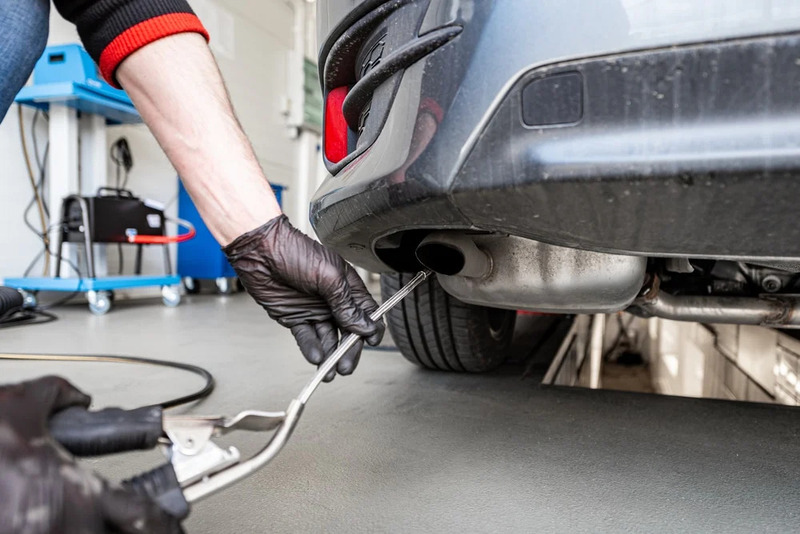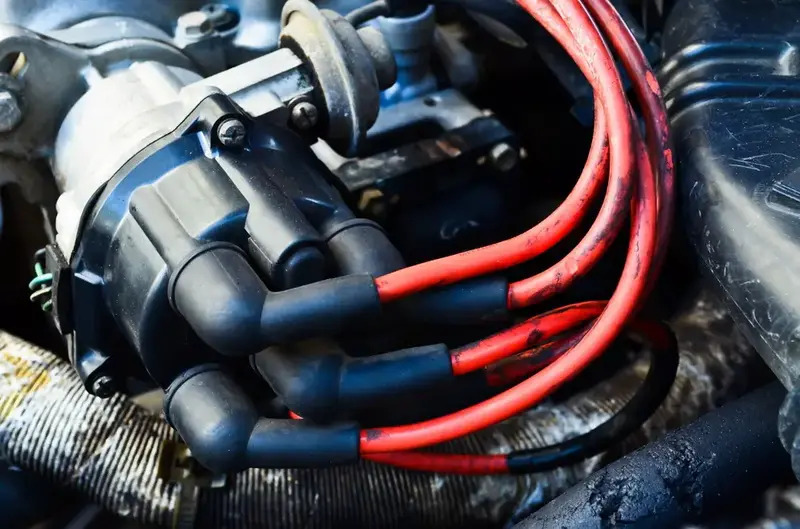All multi-cylindered internal combustion engine that runs on gasoline needs all their spark plugs to be accurately synchronized and this is the job of a distributor in some engines.
Therefore there is a need for a properly functioning distributor for these engines.
One major way to prevent your vehicle’s distributor from malfunctioning is by occasionally testing a distributor for faults.
This article will guide you through the many ways to test your engine’s distributor.
Let’s get started!
What to Do When Testing a Distributor
Using a multimeter tool, you must measure the resistance between the positive and negative terminals in order to test a distributor. A working distributor should have a reading of between 600 and 1400 Ohms.
Lets get to know more about the distributor and common ways you can approach testing a distributor.
The Car Distributor Explained
The distributor is a device powered by a vehicle’s engine that allows high voltage to reach the spark plug from the ignition coil. This device is not found in every car but only in vehicles that use the distributor-style ignition system.
Therefore, if your vehicle uses a distributor-style ignition system and you experience engine misfiring or rough idling, you must consider checking out your distributor.
A distributor-style ignition system comprises the ignition coil, the distributor caps, the rotors, the connectors, and the spark plugs. This ignition system is highly synchronized with the internal combustion engine to ensure smooth running.
The distributor comprises plastic and metallic materials and components that work together to ensure that high voltage reaches a specific spark plug at the right time for combustion in the combustion chamber.
.
How to Know a Bad Distributor Cap
There are some signs that your vehicle will start to experience if you have a malfunctioning distributor cap. A car can exhibit one or more of these symptoms simultaneously; without proper diagnosis, it will be impossible to know if the problem originates from your distributor or any other engine component.
Nevertheless, here and some symptoms that suggest you have a bad distributor cap;
Your Check Engine Light May Light Up
Whenever you see a ‘Check Engine Light’ display on your dashboard, let you know that there is an issue with the performance of your engine.
A faulty distributor cap can cause your powertrain control module to detect a misfire, and it will automatically activate the check engine light.
Also Read: Common Symptoms of a Bad Body Control Module (+ How to Fix)
Cranking Engine But Not Starting
Sometimes the engine will not start, no matter how long you crank. Your distributor cap may suffer from a severe crack, severe carbon tracking, or a worn center terminal.
Difficulty in Starting
You will also experience difficulty starting your vehicle’s engine whenever you have a bad distributor cap. A faulty distributor cap will cause the spark plugs to misfire, therefore not synchronizing with the pistons’ cranking.
The Engine Misfires
When your vehicle misfires or runs roughly, you know you have a probability of problems with your distributor cap. These problems include cracks, worn-down terminals, carbon tracking, and corrosion.
Any of these problems will cause the hindrance of enough voltage being transmitted to the spark plugs, therefore, causing the spark plug to release a weak spark which will reduce the overall performance of the internal combustion engine.
Testing A Distributor Cap and Rotor
You can also test your distributor cap and rotor for issues because they are easy to fix.
Here are the steps to successfully test your vacuum advance unit, distributor cap, and rotor;
- The vacuum advance unit can be tested by uninstalling it first and then visually inspecting for any damage or speck of dirt stuck in it. If there’s any damage to the unit, it needs to be replaced, but if it’s just dirt, you can use a brush to clean it.
- Also, the distributor cap can be tested similarly, uninstalled, and checked for damages or debris buildup. Replace if damaged and clean with a brush if dirty.
- Finally, for the rotor, you will need enough light source, which you will use to inspect it once you have uninstalled it from the vehicle. While testing the rotor, you would carefully measure the gap between the contact points on the rotor and the wires in the distributor cap. If the gap is too wide, the terminals are worn down, but if not, ensure to clean the rotor with a wire brush to remove every debris.

Testing A Distributor For Carbon Tracking
Carbon deposit can sometimes create a conductor which will disperse voltage from its intended target at the distributor cap.
Here are two ways to test for this phenomenon called carbon tracking; Here is the first method
- Using a multimeter, place one probe at the center terminal of the distributor cap.
- Place the other one on each of the spark plug terminals successively
If there is continuity, then the distributor cap is faulty and needs replacement. Below is the second method
- Using the multimeter, place one probe on the outer terminals of the distributor cap.
- Then place the other one on each of the outer terminals successively
If there is continuity, then the distributor cap is faulty and must be replaced
Testing A Distributor With a Multimeter
Whenever you doubt the integrity of your distributor, you can test it with a multimeter.
Here are the steps to follow when testing your distributor with a multimeter;
- You must first disassemble the distributor cap from the rotor
- Next, connect the probes of the multimeter to the negative and positive terminals of the ignition coil
- Ensure that will you check the reading of the ignition coil multimeter is set to detect resistance (Ohms mode)
- If the Reading of the voltage Resistance is outside the ranges of 600 to 1400 ohms, then the ignition coil must be replaced, but if not, it is working properly
- The next step is to use the multimeter and test the igniter by connecting its negative and positive terminals to the multimeter.
- With the settings on the multimeter still on Ohms mode, check the reading for a similar range.
- The next step is to test the pick-up coil by connecting its negative and positive terminals to the multimeter.
- While the settings on the multimeter are still in Ohms mode, check the reading for a similar resistance range.
- If the reading of the voltage Resistance is similar to that of the malfunctioning igniter, then the pick-up coil must be replaced, but if not, it is working properly.
What to Look Out for When Testing A Distributor?
There are many problems that a vehicle’s distributor can suffer from, but among all, there are two major ones;
- One common problem the vehicle’s distributor faces is vacuum advance unit failure. Here the distributor either advances or retard the timing of transferring voltage to the spark plugs.
- Another common problem faced by vehicles distributor is the issue of a worn-out distributor cap and rotor whereby the terminals in the rotor and why in the distributor cap have either been damaged or corrupted with age and can no longer transfer voltage efficiently.
Also Read: 7 Bad Speed Sensor Symptoms (+ Replacement Guide)
Frequently Asked Question – Testing A Distributor
How many ohms should a distributor have?
A distributor for any vehicle which uses a distribution style, the ignition system should have at least three ohms of resistance in the coils.
What happens when the distributor goes bad?
If the distributor goes bad, it cannot send voltage to the spark plug. This issue can lead to many problems for the engine as it can cause misfiring or hard starting.
What are the symptoms of a bad distributor cap and rotor?
Some common symptoms of a bad distributor cap and rotor include the check engine light coming on, loss of power in the engines, unusual engine noises, the car not starting, and the engine misfiring.
Conclusion – Testing A Distributor
For every vehicle that uses the distribution-style ignition system, the distributor is vital to that engine’s operation. Hence one should understand how to test their distributor for any issue. The distributor comprises different components, including the distributor cap, the rotor,
The vacuum advance unit, and the connectors. And if any of these components suffer structural damage, the distributor may not function. After reading this article, you should be guided on the steps to follow when testing your distributor. As shown in the article above, you can test every distributor component individually. Remember, if you cannot do it yourself, it is always wise to employ the services of an expert.

